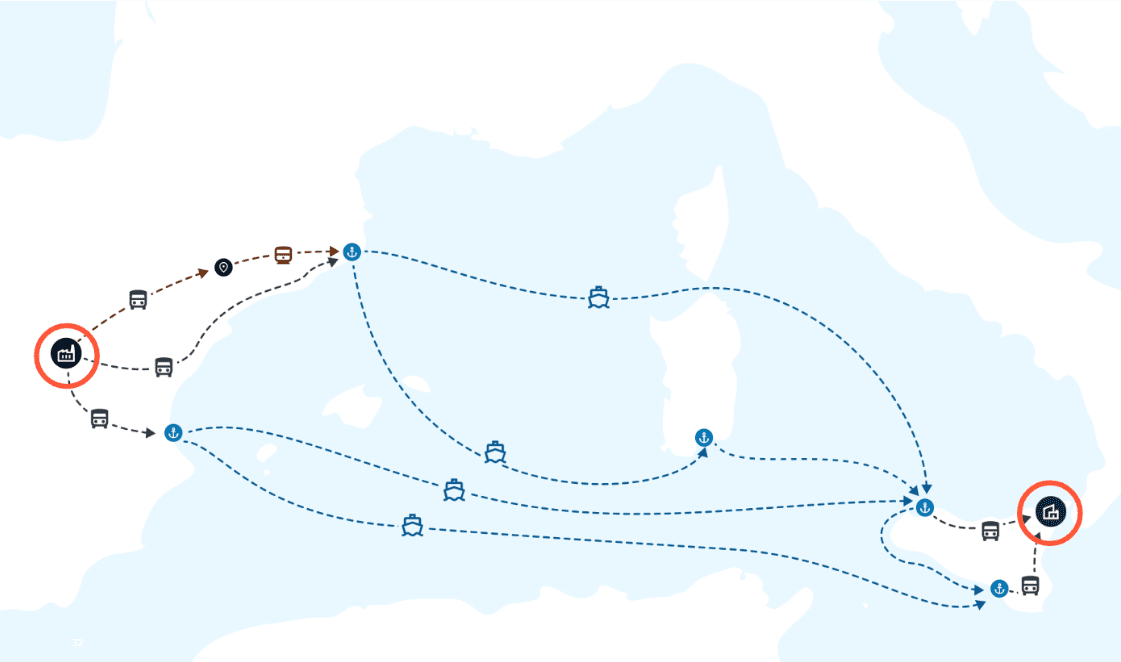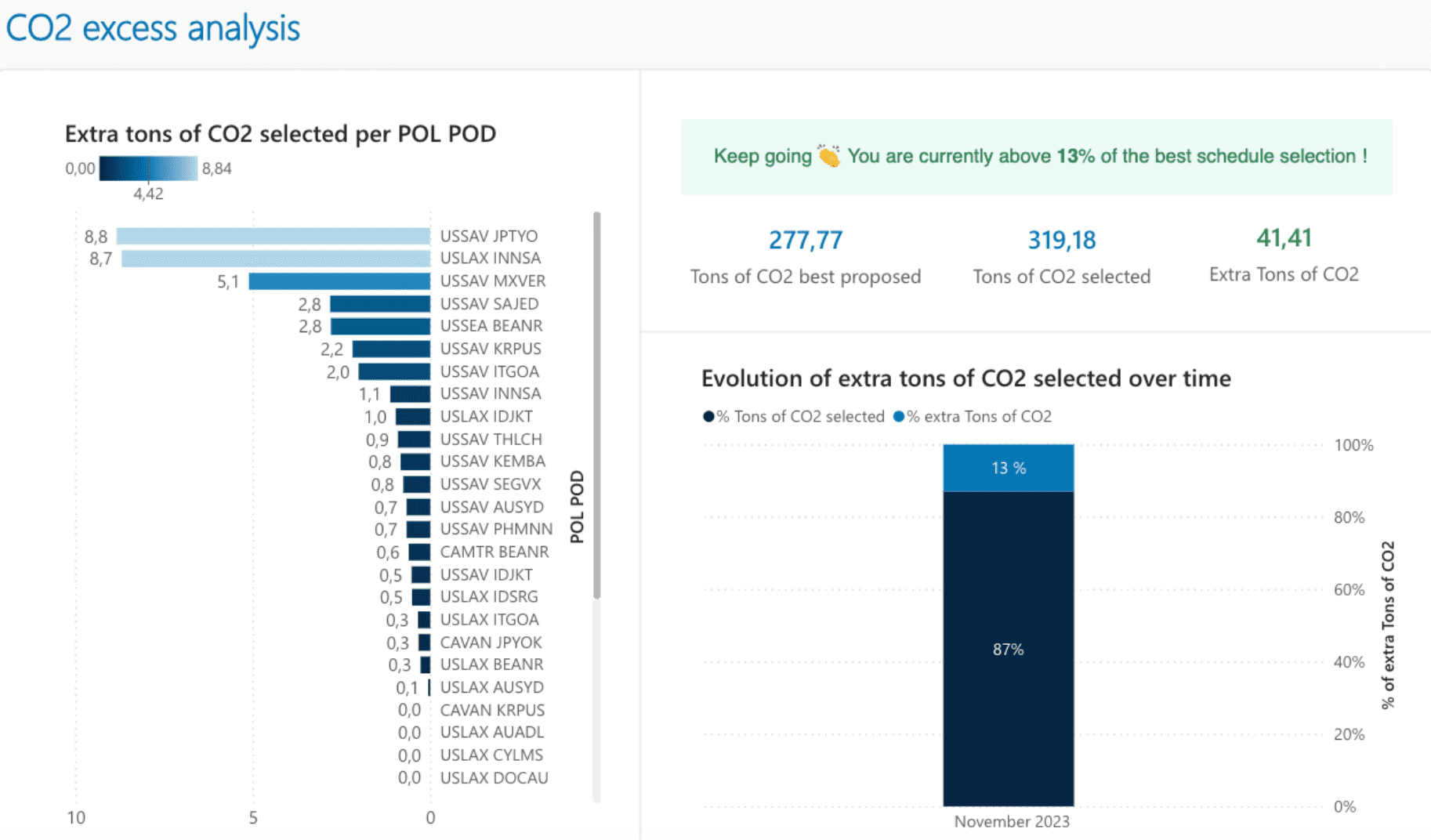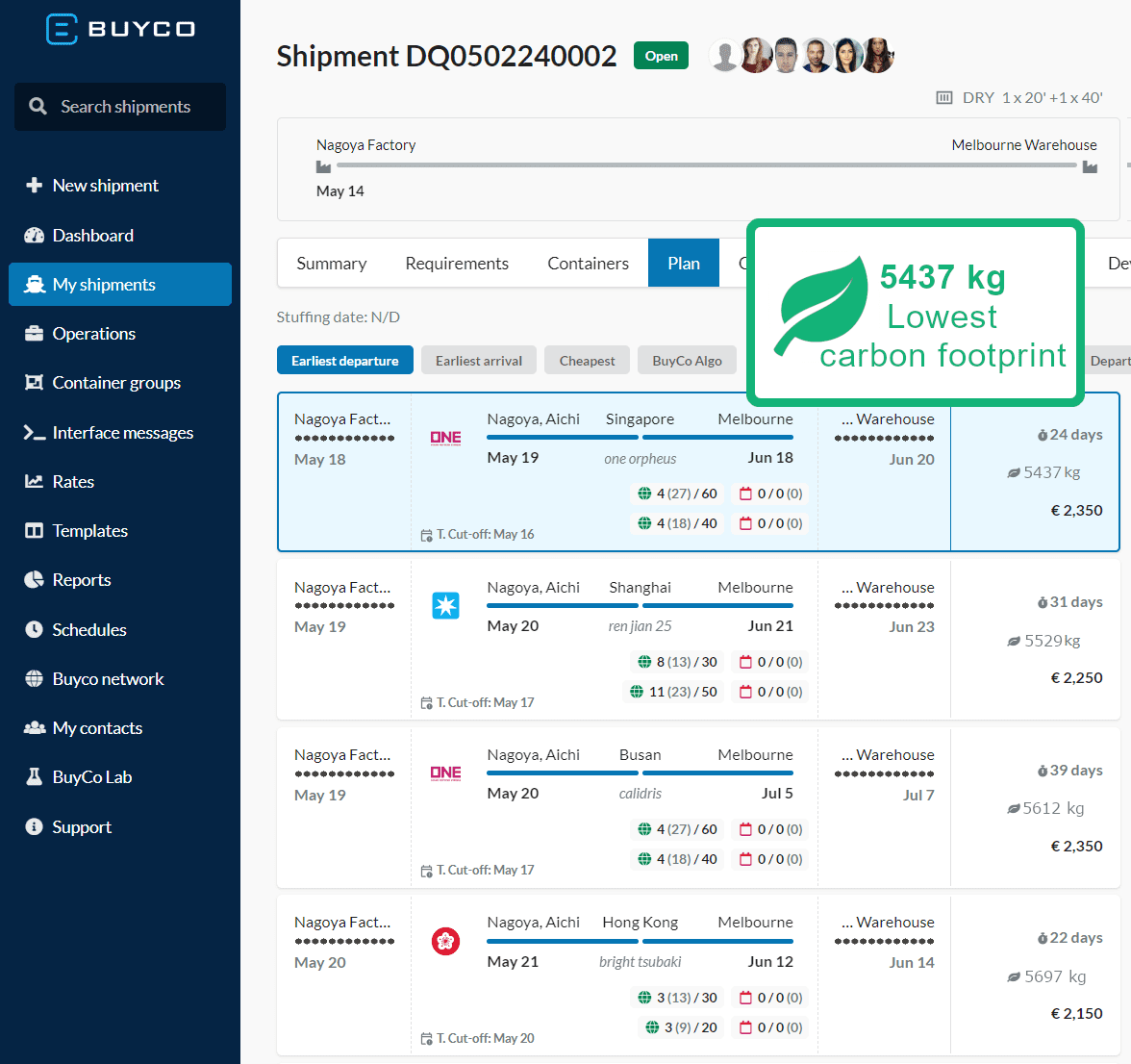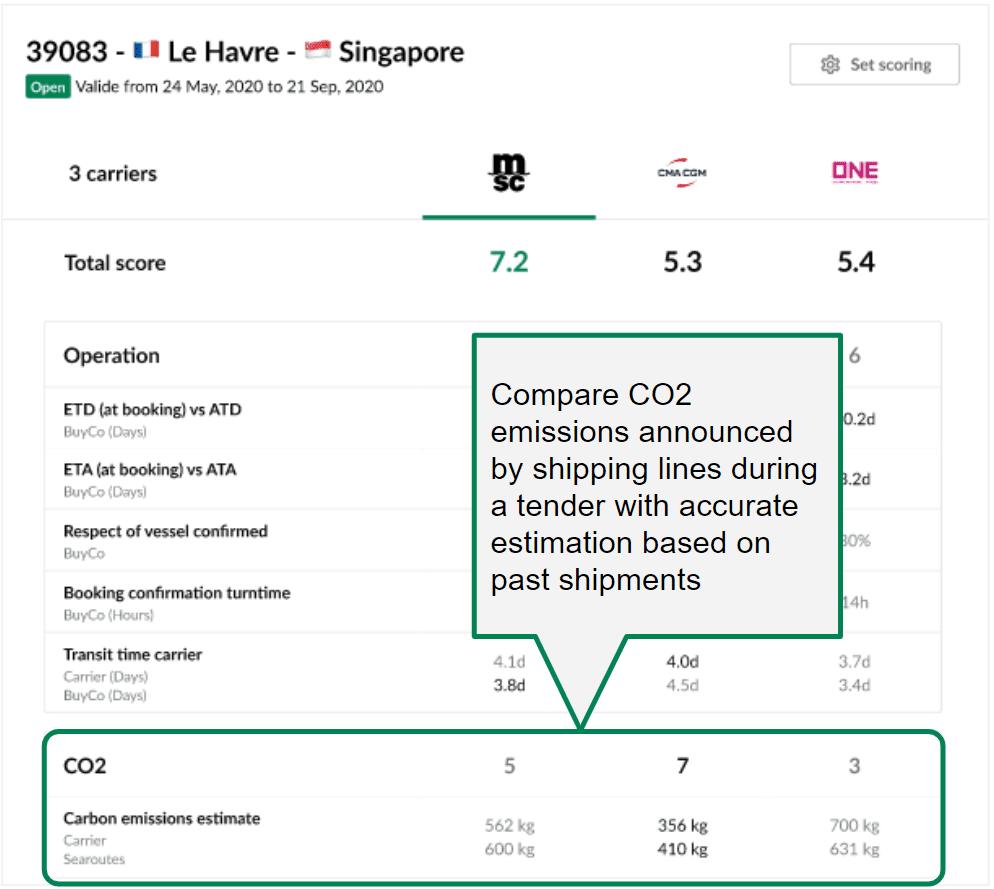Reduce Scope 3 Freight Emissions
Container shipping accounts for 3% of global carbon footprint. We can play our part to make a positive impact on the planet for the generations to come by reducing container freight emissions.

Why act?
Global warming caused by carbon emissions is already having a dramatic impact on the planet. Reducing container freight emissions is becoming a higher concern for shipping organizations due to government regulations and taxes on emissions. Charges on CO₂ emissions have already doubled for all shipments in and out of the EU (in IMO regulations). Charges on CO₂ will only continue to rise as time goes on.
Ultimately, reducing CO₂ will help your organization positively impact the planet, make happier customers, and reduce costs. BuyCo is here to partner with you and give your organization the tools you need to not only measure but more importantly reduce your carbon container freight carbon footprint.
Shippers’ requirements
Challenges
Reduce Container Freight Emissions With Multimodal Routing and Vessel Selection
BuyCo assists in determining the
Emissions for each leg are calculated based on factors such as distance, speed, and mode of transport. When it comes to ocean travel, the engine power and vessel specifics are considered, providing an accurate assessment of the CO2 impact of a particular shipment.
This empowers your operational teams to make environmentally conscious decisions when selecting the best route and vessel, at the time of booking, all while balancing other operational priorities like departure and arrival dates, costs, and shipping line allocations.
- Find the route with
lower carbon emissions , including inland and oversea segments - Select the most
eco-friendly vessel for shipping containers at the time of booking - Embed
decarbonization into your automatic routing process
Measure your Carbon Emissions Operational Performance vs current routing portfolio and vs global emission benchmark
With BuyCo shippers can compare their current container shipping choices against the most efficient strategy for reducing carbon emissions.
- How often do I choose
the most optimal CO2 solution within the options defined by my existing tenders? - What are the largest gaps compared to the optimum CO2 options found across all possible routings and tenders with shipping lines? In other words how can I effectively
strategize my tenders to minimize carbon emissions.
ACCREDITED BY
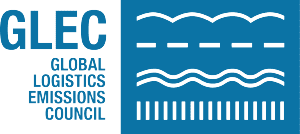
GLEC Accredited Calculation Methodology
Selecting the most eco-friendly vessel for a shipment at the time of booking requires that you can assess the true emissions of this vessel. Using average emissions makes all vessel look the same when it comes to carbon emissions. But there is a x9 difference in carbon emissions per TEU between a small vessel and a large container ship carrying 20,000 boxes.
BuyCo’s carbon emissions evaluations are powered by our partner Searoutes’ CO2e calculations. Estimations of fuel consumptions are accredited by the GLEC and Smart Freight Center. Calculations are based on:
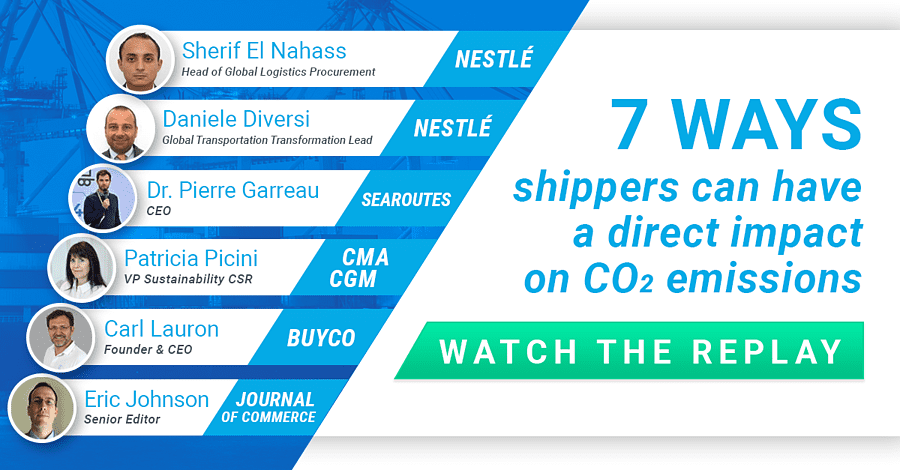
▶ Watch our Webinar
In our webinar, “7 ways shippers can have a direct impact on CO2 emissions, learn about the best sustainable practices from experts in the field. You will discover:
- Tactics to reduce CO2 emissions
- Strategies Nestlé and CMA CGM have implemented
- How technology can help you improve your carbon footprint
Embed decarbonization into your automatic routing process
Choosing the most environmentally-friendly route and vessel for a specific shipment is crucial in empowering operational teams to address carbon emissions. By implementing a systematic approach, for all shipments, companies can embark on a genuine
With BuyCo’s innovative platform, shippers can automatically select the optimal vessel and shipping line to fulfill their transport needs while minimizing carbon footprint. The automated decision-making process considers factors like door-to-door emissions, cost, transit time, and carrier allocations to ensure sustainability and efficiency.
Selecting shipping schedules for maritime transportation is a complex task and adding the CO2 factor makes it even more challenging. BuyCo simplifies this process, making it actionable for shippers to select eco-friendly routes and actively contribute to minimizing their impact.
Efficient data gathering and reporting
Various countries and regions, including Europe, have implemented regulations and reporting requirements concerning carbon emissions. It is not only a legal obligation but also crucial for shippers to comply with these regulations to avoid fines and penalties. Complying with CO2 emissions reporting is essential for meeting legal requirements, building trust with stakeholders, managing risks, reducing costs, staying competitive, and contributing to global efforts in combating climate change.
Reporting on CO2 emissions can be highly intricate, depending on factors such as the organisation’s size and nature, the extent of emissions sources, and the specific reporting frameworks or standards used. Larger organisations with extensive operations and emissions sources face a more complex reporting process. Multinational corporations often have to report emissions from a global network of facilities and transportation.
The availability and quality of data on emissions sources significantly impact the complexity of reporting. By utilising
Accurately verify the amount of ETS surcharges invoiced by carriers
Several large shipping lines have informed shippers that they will impose ETS surcharges based on the quantity of CO2 emissions for their shipments. The European Union’s Emissions Trading System (ETS) provides a cost for CO2 emissions, which will be added to the freight costs. Shipping lines have recently cautioned shippers about the unpredictable nature of ETS surcharges, influenced by the supply and demand of international trade.
Shippers need to closely monitor the emissions of each shipment in order to:
- Anticipate the cost of ETS surcharges and their impact on the cost of goods sold (COGS)
- Ensure that the invoiced amount for ETS surcharges by shipping lines accurately reflects the actual emissions of their shipments. If a shipper strategically chooses the most efficient vessels to minimize carbon emissions, the invoice should not calculate the cost of ETS surcharges based on average CO2 emissions but rather on the real emission level.
By utilizing BuyCo’s precise emissions calculation and reporting, shippers can verify that their freight invoices, with ETS surcharges, accurately reflect their actual CO2 emissions. This enables them to
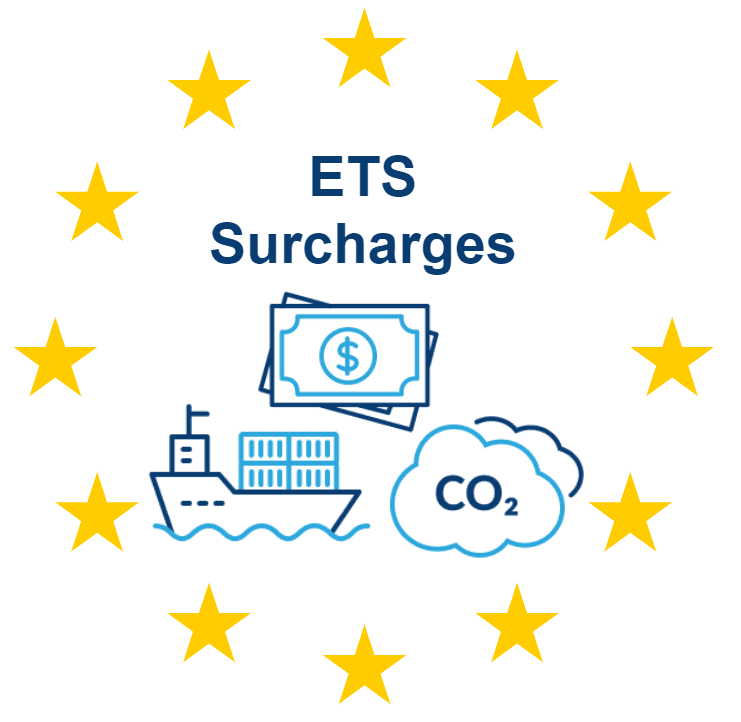
Benchmark the operational effectiveness of shipping lines, including their carbon emissions
Tendering is a complex decision-making process jungling with many factors such as price, volumes, port pairs and transit options. The level of carbon emission and associated cost is further complicating the task of comparing tenders from various shipping lines.
Co₂ntrol Project

The Co₂NTROL project, created in collaboration with BuyCo and Searoutes, aims to provide an innovative digital solution that allows shippers to actively take control of their Co₂ emissions and reduce their carbon footprint
Our partners
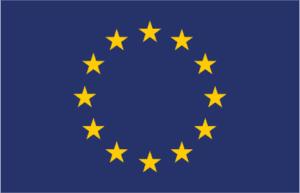
Co₂NTROL is co-funded by the European Maritime and Fisheries Fund, whose goal is to invest in sustainable technology projects that support decarbonisation and the EU Green Deal objectives.

Ready to reduce emissions of container freight?
Discover how BuyCo can help you meet your corporate climate goals

